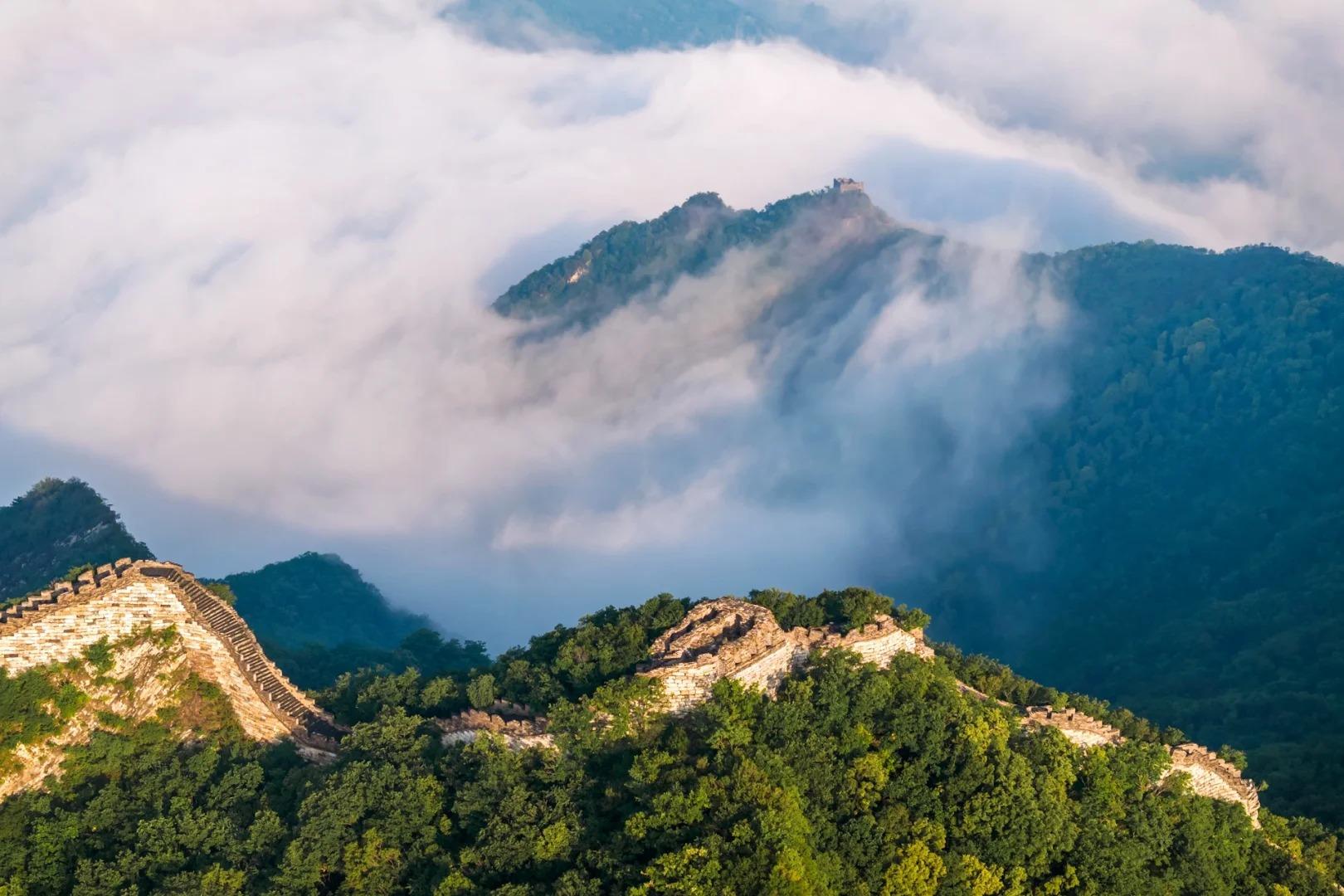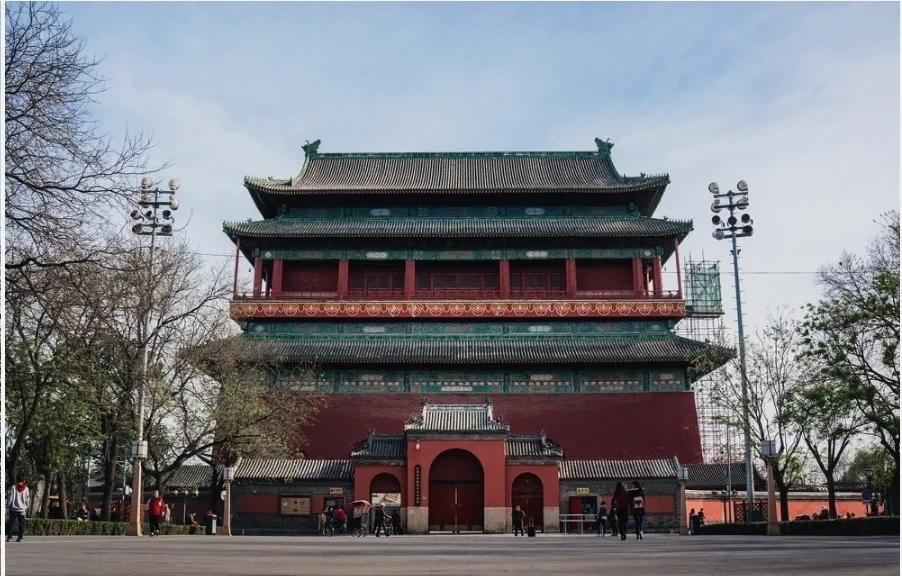Visiting Information
| Information | Details |
|---|---|
| Chinese Name | 箭扣长城 (Jiànkòu Chángchéng) |
| Location and Address | Huairou District, Beijing, China |
| Opening Time/Hours | 24/7 (Not officially open to tourists, no set opening hours) |
| Entrance Fee | No official entrance fee |
| How to Get There | From Beijing: By Bus: Take bus 916 from Dongzhimen to Huairou, then take a local bus to Xizhazi Village By Car: About 2 hours drive from Beijing city center By Taxi: Available but expensive, around CNY 400-500 one way (No direct metro service available) |
| Best Time for Visit | Spring (April to May) and Autumn (September to October) for comfortable weather and beautiful scenery |
| Contact Info | No official contact information (Not officially open to tourists) |
Overview
Jiankou Great Wall is a wild and unrestored section of the Great Wall of China, located in the Huairou District of Beijing, about 73 kilometers north of Beijing city center. Known for its rugged beauty and treacherous terrain, Jiankou is often referred to as the “Wild Great Wall.” This section stretches for about 20 kilometers and is characterized by its steep mountain ridges, crumbling watchtowers, and overgrown paths. Jiankou offers a raw and authentic Great Wall experience, attracting adventurous hikers and photographers from around the world.
Historical Background
The Jiankou section of the Great Wall was built during the Ming Dynasty, around 1368 AD. It was constructed as part of the defensive fortification system to protect the imperial capital of Beijing from northern invaders. The name “Jiankou” means “Arrow Nock” in Chinese, which is derived from the shape of the mountain ridge where this section of the wall is built, resembling an arrow nock. Due to its strategic location and difficult terrain, Jiankou played a crucial role in the defense of Beijing. Over the centuries, this section has been largely abandoned and left to the forces of nature, resulting in its current wild and partially ruined state.
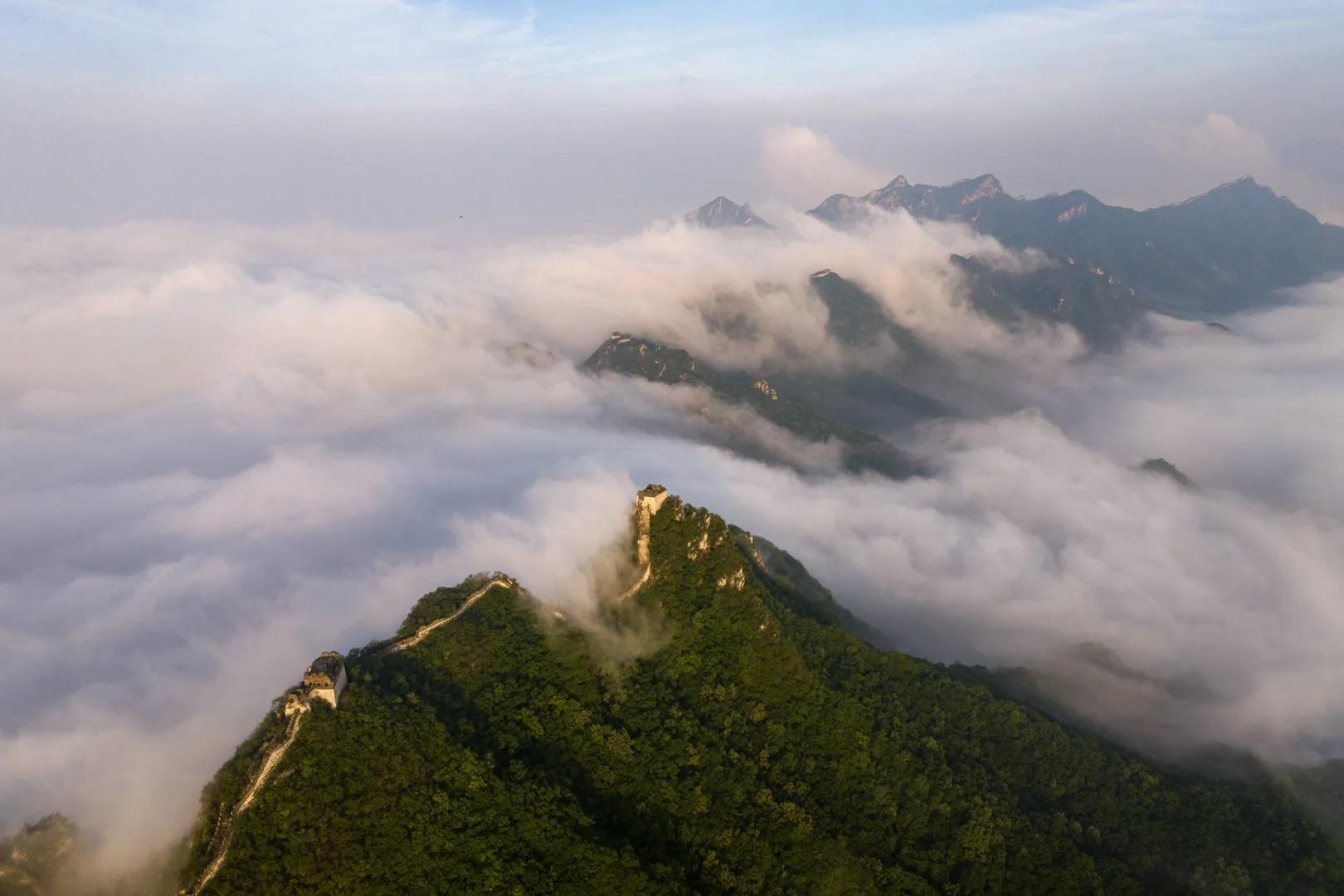
Architectural Features
- Watchtowers: Jiankou features numerous watchtowers, many of which are in various states of disrepair. The most famous of these is the “Eagle Flies Facing Upward” tower, named for its precarious position on a cliff edge. These towers offer stunning views of the surrounding mountains and the winding wall.
- Wall Structure: The wall at Jiankou is primarily constructed of local materials, including large white rocks found in the area. This gives the wall a distinctive appearance, especially when contrasted against the green mountains. The structure varies in width and height along its length, adapting to the challenging terrain.
- Sky Stairs: One of the most famous features of Jiankou is the “Sky Stairs,” an almost vertical climb up a mountain ridge. This section is known for its steepness and the challenge it presents to hikers.
- Beijing Knot: This is the point where the wall meets from three directions, forming a triangle. It’s a unique architectural feature that showcases the strategic design of the wall.
- Natural Integration: Unlike restored sections of the wall, Jiankou showcases how the Great Wall integrates with and adapts to the natural landscape. Trees and vegetation grow on and around the wall, creating a unique blend of man-made structure and nature.
Cultural Importance
Jiankou Great Wall holds significant cultural importance as it represents the raw, untouched history of China’s most famous monument. Unlike heavily restored sections, Jiankou offers a glimpse into how the Great Wall has weathered over centuries, providing valuable insights for historians and archaeologists. It symbolizes the endurance of Chinese architecture and the power of nature. The challenging terrain of Jiankou also embodies the determination and skill of ancient Chinese builders who constructed this formidable defense system in such difficult conditions. Today, it serves as a reminder of China’s rich history and the country’s ongoing relationship with its cultural heritage. The wild state of Jiankou also raises important questions about preservation versus natural decay, contributing to ongoing discussions about cultural heritage management in China.
Surrounding Attractions
- Mutianyu Great Wall: Located about 10 kilometers east of Jiankou, Mutianyu is a well-restored section of the Great Wall. It offers a more tourist-friendly experience with cable cars and toboggan rides, making it a good complement to the wild Jiankou section.
- Huanghuacheng Great Wall: This section, known as the “Water Great Wall,” is about 30 kilometers from Jiankou. Part of this section is submerged in a lake, creating unique scenery, especially during summer when the surrounding mountains are covered in yellow wildflowers.
- Xizhazi Village: This small village at the foot of Jiankou Great Wall serves as the starting point for many hikes. It offers a glimpse into rural life in the Beijing suburbs and is known for its friendly locals and traditional architecture.
- Hongluo Temple: Located about 20 kilometers from Jiankou, this ancient Buddhist temple is known for its beautiful architecture and surrounding red snail-shaped hills, which give the temple its name.
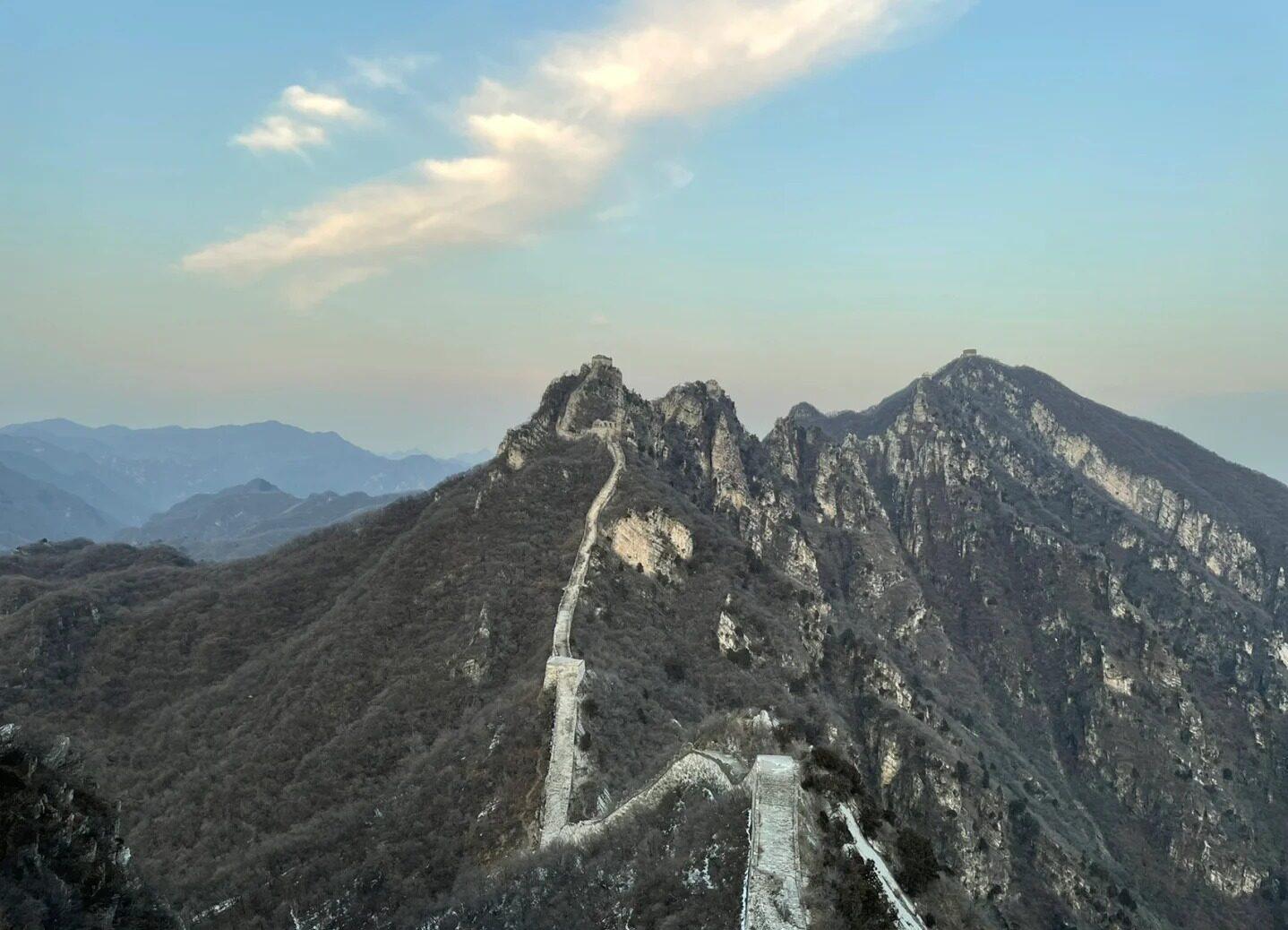
Photography Opportunities
- Sunrise Views: The “Nine-Eye Tower” at Jiankou is a popular spot for capturing stunning sunrise views. The early morning light illuminating the misty mountains and the winding wall creates breathtaking images that have made Jiankou famous among photographers.
- Rugged Landscape: The combination of crumbling watchtowers, steep mountain ridges, and the winding wall provides numerous opportunities for dramatic landscape shots. The contrast between the ancient wall and the lush, wild vegetation offers a unique visual narrative.
- Seasonal Variations: Each season offers unique photographic opportunities at Jiankou. Spring brings misty mornings and blooming flowers, summer showcases lush green landscapes, autumn paints the surroundings in vibrant colors, and winter often covers the wall in snow, creating a stark, monochromatic landscape.
- Night Photography: For experienced hikers, staying overnight (with proper permissions and safety measures) can yield spectacular night photography opportunities. The wall under starry skies or a full moon creates ethereal, otherworldly images.
- Human Element: Incorporating hikers into photographs can provide a sense of scale and add a human element to the ancient structure, telling the story of modern adventurers exploring this historical wonder.
Modern Importance
- Adventure Tourism: Jiankou has become an important destination for adventure tourism in China. Its challenging terrain and unrestored state attract hikers and thrill-seekers from around the world, contributing to the diversification of China’s tourism industry.
- Conservation Debates: The wild state of Jiankou has sparked important discussions about cultural heritage conservation. It raises questions about whether to restore such sections or leave them in their natural state, contributing to ongoing debates about preservation strategies for historical sites.
- Scientific Research: As an unrestored section, Jiankou provides valuable opportunities for archaeological and historical research. Scientists can study the original construction techniques, materials, and decay processes, offering insights into the wall’s history and potential conservation methods.
- Environmental Awareness: The integration of the wall with the natural environment at Jiankou highlights the relationship between human constructions and nature. This has made it an important site for raising awareness about environmental conservation and sustainable tourism.
- Photography and Arts: Jiankou’s dramatic landscapes have made it a muse for photographers and artists worldwide. The images captured here have played a significant role in promoting China’s cultural heritage and natural beauty on the global stage.
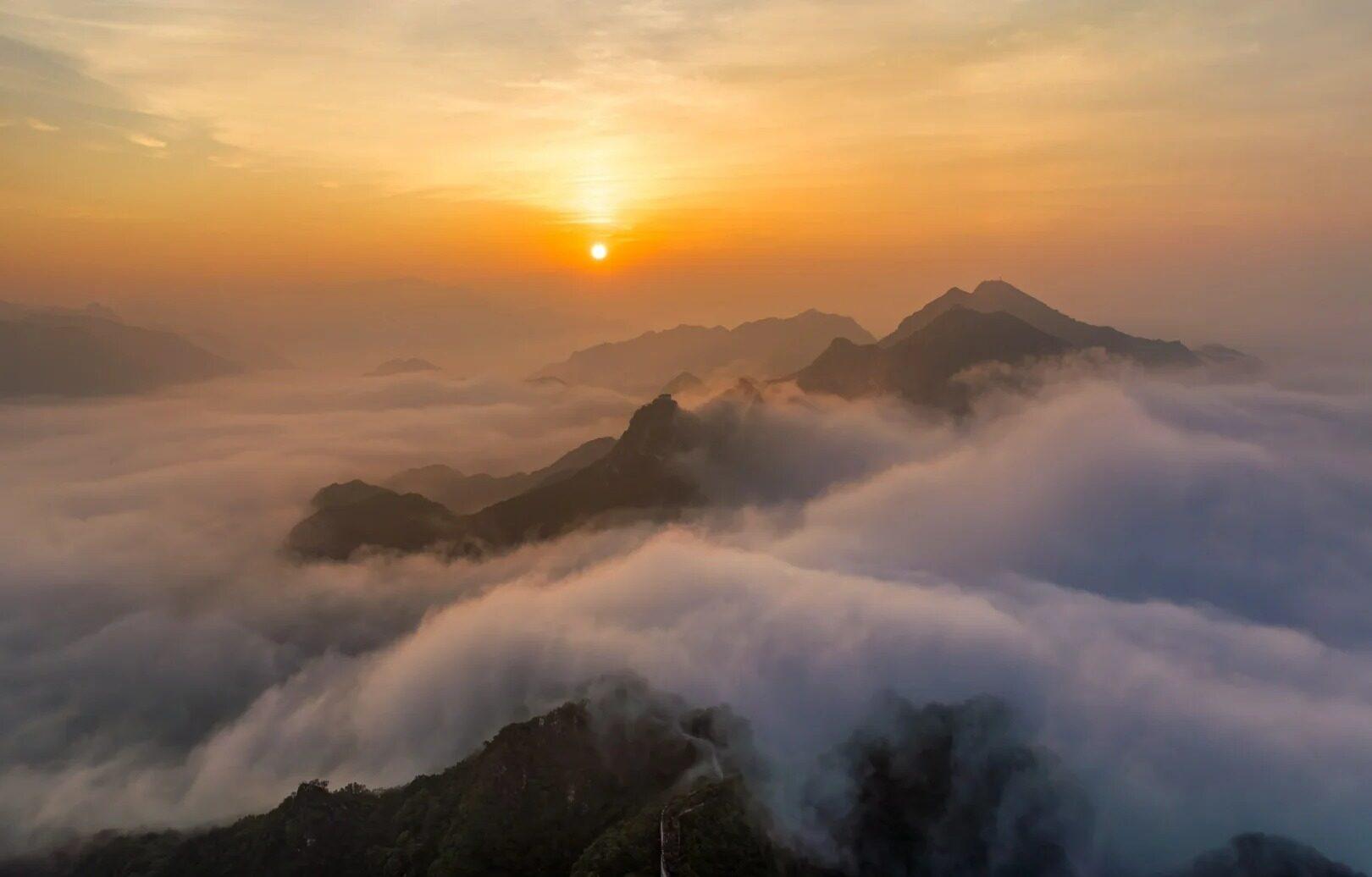
FAQ
- What is the Jiankou Great Wall famous for?
The Jiankou Great Wall is famous for its wild, unrestored state, steep terrain, and breathtaking views. It’s known as one of the most challenging and photogenic sections of the Great Wall. - What’s inside the Jiankou Great Wall?
The Jiankou Great Wall features rugged, unrestored wall sections, crumbling watchtowers, steep “Sky Stairs,” and the unique “Beijing Knot” where the wall meets from three directions. - Is the Jiankou Great Wall free?
Technically, there’s no official entrance fee as Jiankou is not an officially opened tourist site. However, visitors should be aware that access might be restricted and hiking here comes with risks. - Is the Jiankou Great Wall worth visiting?
For adventurous travelers and photography enthusiasts, Jiankou Great Wall is definitely worth visiting. However, it’s important to note that it’s challenging and potentially dangerous, so proper preparation is essential. - What to do in the Jiankou Great Wall?
At the Jiankou Great Wall, you can hike along the unrestored wall, explore ancient watchtowers, enjoy panoramic views, and take stunning photographs. Experienced hikers might attempt challenging climbs like the “Sky Stairs.” - How do I get to the Jiankou Great Wall in the local city?
From Beijing, you can take bus 916 from Dongzhimen to Huairou, then take a local bus to Xizhazi Village. From there, it’s a hike to reach the wall. Alternatively, you can drive or take a taxi, which takes about 2 hours from Beijing city center. - How to visit the Jiankou Great Wall?
To visit the Jiankou Great Wall, it’s highly recommended to go with an experienced guide due to the challenging terrain and lack of facilities. Wear sturdy hiking boots, bring plenty of water and snacks, and be prepared for a strenuous hike. Start early in the day and ensure you have enough time to return before dark.


